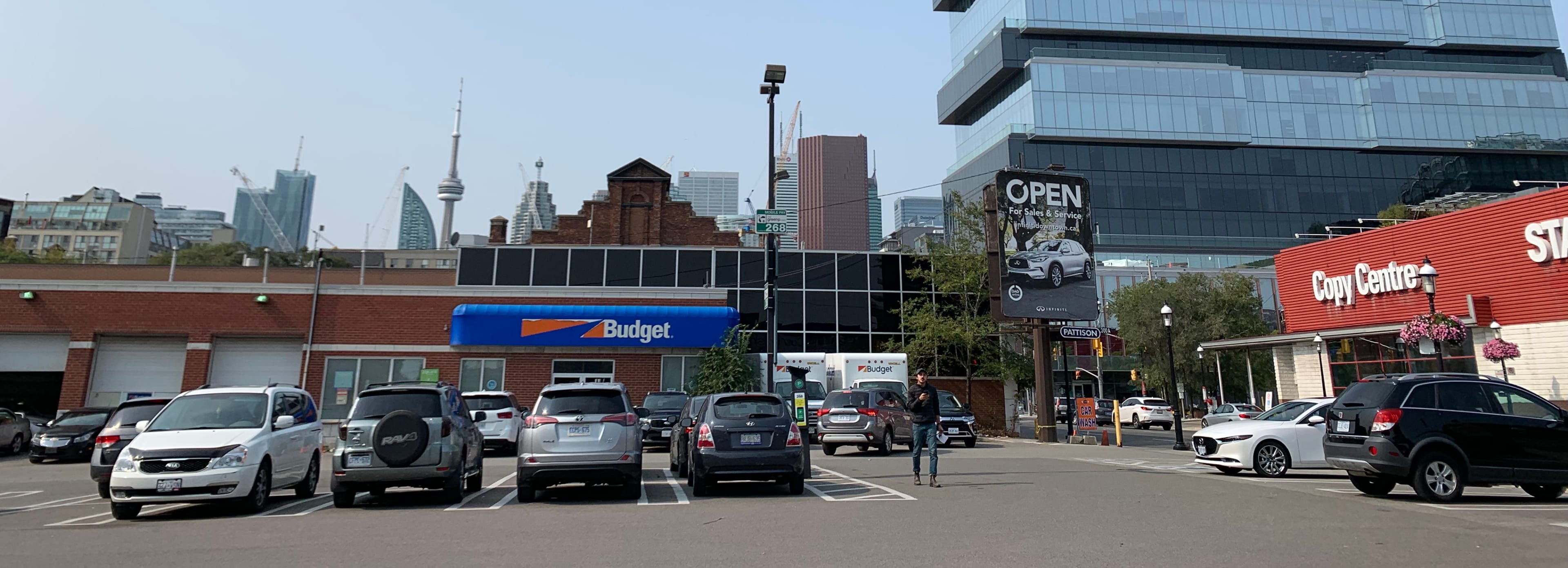Ontario Line plans to preserve site of old parliament buildings
Work on the Ontario Line project may help to pay tribute to the legacy of a Toronto site.
Jan 22, 2021
It doesn’t now look like a piece of Canadiana – largely a parking lot and commercial properties, including a car wash and car dealership.
But the area in downtown Toronto, located at Berkeley Street and Front Street East, has an important place in Canadian history – home to the first two Parliament Buildings in Upper Canada (from 1797 to 1813 and 1820 to 1824 respectively).
History underneath – This parking lot was once home to the first Parliament Buildings in Canada. (Mike Winterburn photo)
It’s now become the focus of media and social media attention, as it will also play an important role in the future of the city, as part of the Ontario Line. Metrolinx is committed to partnering with the city to ensure the subway brings great opportunity to this neighbourhood.
The site will be undergoing archaeological assessments, that will look to raise, and profile, the legacy of the land, say Metrolinx officials.
While there are no historical buildings on site, Ontario Line plans will commemorate the area’s importance to Toronto, and the country.
Archeological assessments are being planned in advance of any potential use for the project. This is an important first step as Metrolinx will work with the Ontario Heritage Trust, the City of Toronto, property owners, and community members to ensure any archaeological findings, or historical features, are properly documented or conserved. Itwould also involve them being made accessible for the public to learn more about.
Metrolinx has pointed out the history of the land goes back much further than the first parliament buildings. The transit agency is committed to working with Indigenous communities to better understand the important histories and rights of the peoples that have and continue to live in this area.
With regard to archaeological studies, Metrolinx will engage with First Nations to ensure their involvement, participation and identification of any Indigenous sites or artifacts that may be found in accordance with that Nation’s protocols.
Want to know more about this work, and how it fits into the larger Ontario Line project? Check out this earlier story for more details.
